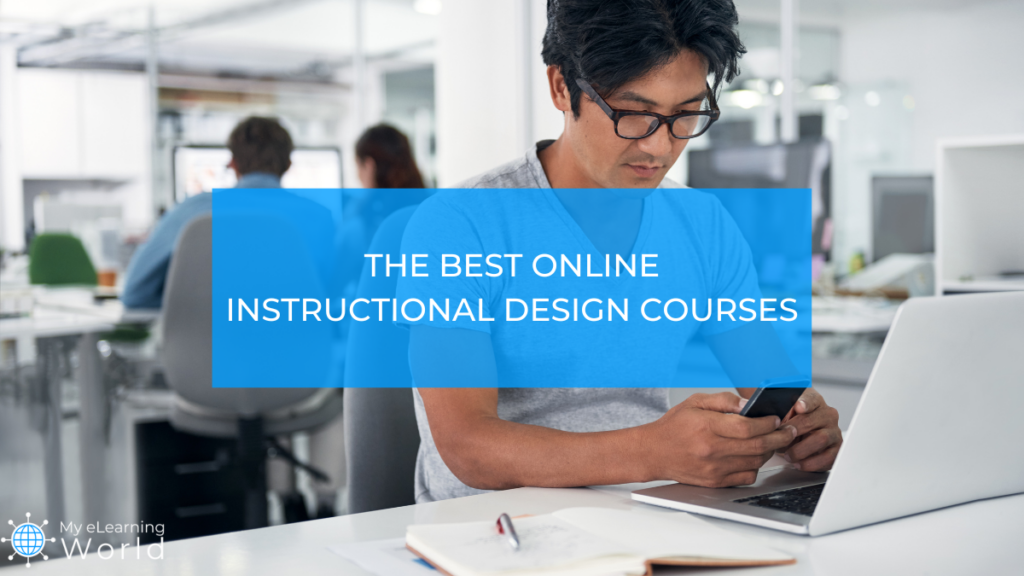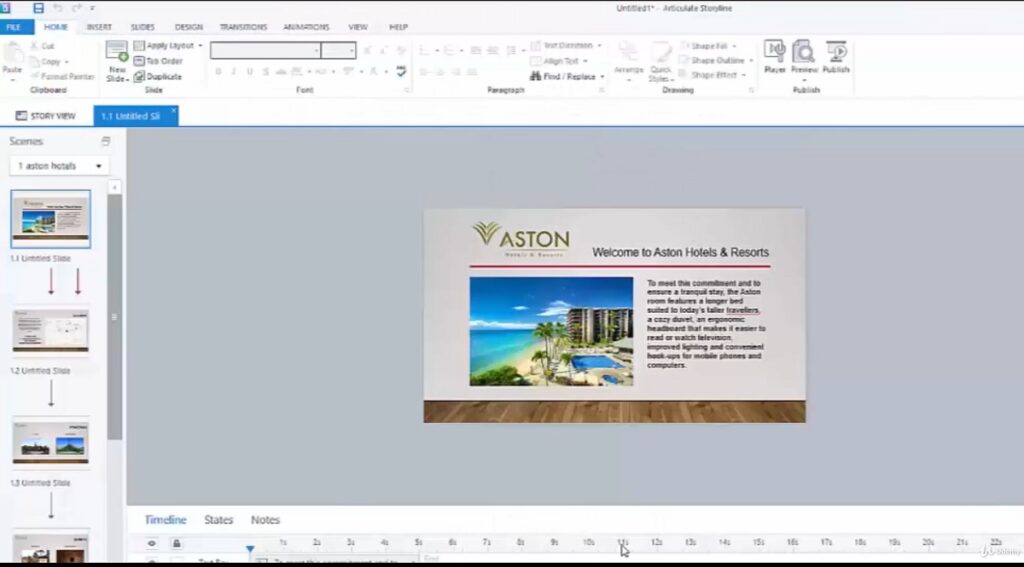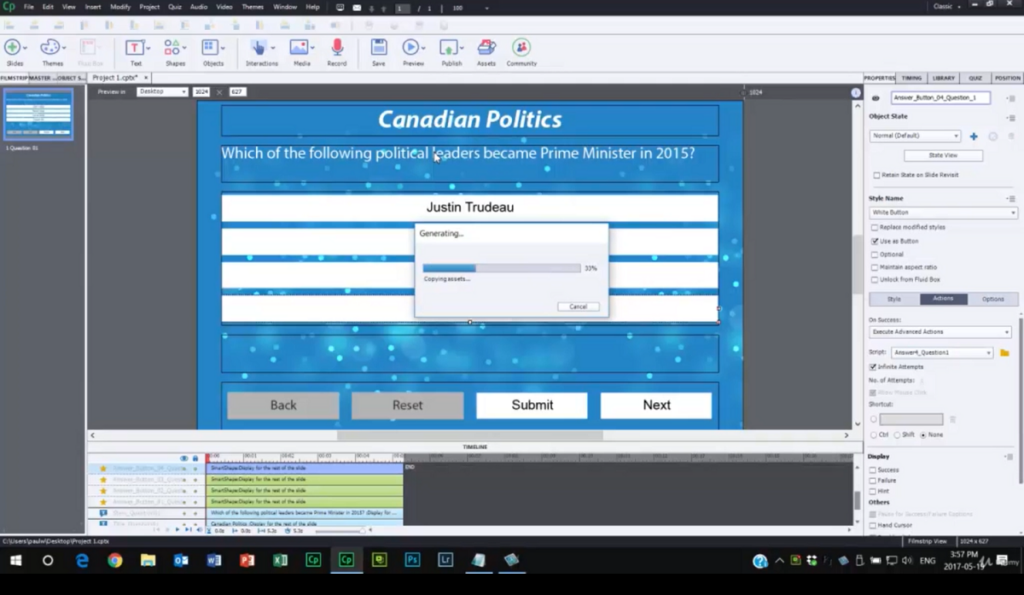Did you know the Bureau of Labor Statistics expects the demand for instructional designers to grow faster than the average for all other occupations over the next decade?
I’ve spent the better part of my life obsessing over everything eLearning and instructional design. From those late nights tweaking course modules to testing out all new LMS programs – I’ve been there, done that, and loved every second of it. It’s why I started this website in the first place — to share my passion for eLearning with others who might want to break into the industry.
But here’s the thing — I didn’t go the traditional route of getting a master’s degree in the field. I was taught mostly through online courses.
With the best instructional design courses online, you too can gain the skills and knowledge needed to enter the educational field, transition into virtual learning, or even create your own online courses.
I’ve navigated through the sea of online courses out there to bring you an in-depth, unbiased look at the best training programs out there to help you become an instructional designer, including options from platforms like Emeritus, iSpring Solutions, LinkedIn Learning, and more. These picks are based on the quality of the curriculum, instructor credentials, certifications, cost, student reviews, and other key factors.
Note: If you’re an aspiring instructional designer, we also highly recommend downloading your free copy of An Instructional Designer’s Notebook from our friends at iSpring as it’s a great companion to this guide.
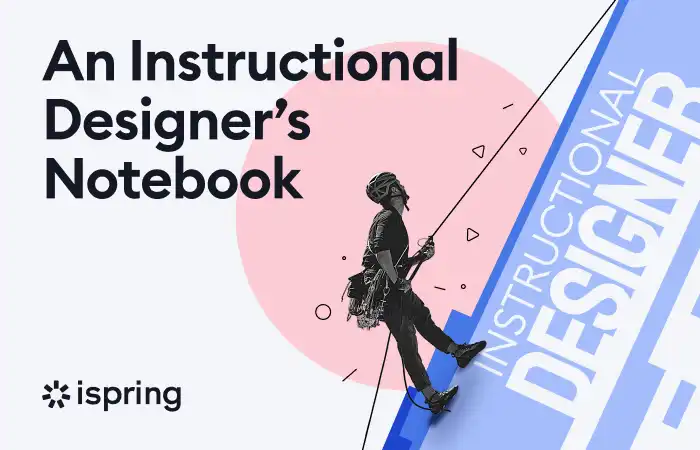 An Instructional Designer's Notebook
An Instructional Designer's Notebook
Instructional Designer’s Notebook is a free collection of the most useful guides on becoming an instructional designer and creating eLearning content to facilitate every step on your eLearning trajectory. It includes lists of ebooks, YouTube channels, blogs, tips from top experts, interactive checklists, and more.
What are the Best Instructional Design Courses Online?
Here are my 2024 picks for the top instructional design classes online. Click on any course to learn more about it, or just keep scrolling down to read about each of them in detail:
- Professional Instructional Certificate (Emeritus)
- How to Create an Interactive Online Course (iSpring Solutions)
- Become an Instructional Designer (LinkedIn Learning)
- e-Learning Ecologies (Coursera)
- Instructional Design Foundations (Coursera)
- Instructional Design Pro Part 1 (Udemy)
- Create Your First Course in Articulate Storyline 3 (Udemy)
- Adobe Captivate Courses (Udemy)
- Instructional Design and Technology MicroMasters (edX)
- Introduction to Instructional Design (Harvard)
1. Professional Certificate in Instructional Design (Emeritus)
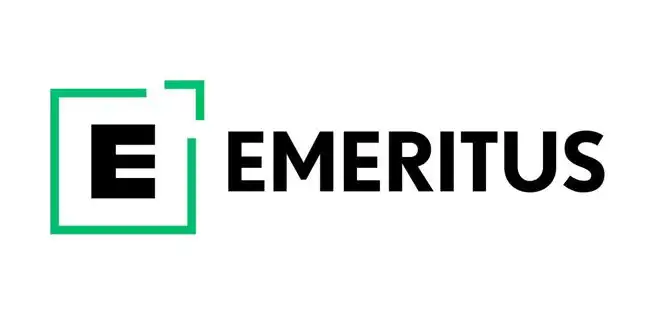 Emeritus Professional Instructional Design Certificate | Online Certificate Course
Emeritus Professional Instructional Design Certificate | Online Certificate Course
Gain firsthand expertise in instructional design principles and methodologies through this unique Professional Certificate program. Create impactful learning solutions and improve people's ability to learn.
Cost
$3,500 total (significant early-bird discounts may be available at certain times during enrollment; flexible payment options also available)
Duration
5 months
Pros
- Offers in-depth instructional design training to quickly get you career-ready
- The course is fully up to date and includes info on the latest technology, tools, and instructional design methods
- Hands-on, interactive instruction helps students learn quicker and more effectively
- Cohort-style learning allows you to connect with peers for feedback and networking
Cons
- Class is only offered a few times a year
Overview
If you’re pursuing a career in instructional design, you can gain the experience and skills you need to succeed in the field with the Professional Certificate in Instructional Design from Emeritus. It’s our pick for the best instructional design course out there today.
In only 5 months, you can get all the world-class training you need to earn a certificate and build your career as an instructional designer.
Emeritus’ instructional design training certificate program offers industry-relevant topics, experienced instructors, and hands-on opportunities.
You’ll learn all about the analytics and methodologies needed to create engaging, effective learning solutions for your students or colleagues — no matter which platform or tool is used.
Other topics explored in this learning path include:
- Instructional design theories and models
- Tips for applying instructional design to projects
- How to develop clear objectives for instructional design projects
- Best practices for course implementation and improvement
- How to create engaging learning experiences
Are you a teacher, recent graduate, or early-career instructional design professional looking to boost your career? This course is for you!
Not only does it offer valuable networking opportunities, but it can also help you stand out when applying for new job opportunities. Don’t miss out on the chance to take your career and instructional design skills to the next level.
Joining Emeritus as a student means being part of a supportive learning community committed to your growth and triumph.
With a closely-knit cohort, you embark on an educational journey, working together to navigate coursework and uplift each other. Expect meaningful collaborations and insightful exchanges, as well as supplemental resources to ensure everyone stays on track. This unique blend of community and resources empowers students to master new skills and turn their lives around.
Enroll now in this instructional design program and receive a free one-year subscription to Emeritus Insights! This innovative app offers access to over 5,000 condensed lessons and lectures from top universities and publications like Harvard Business Review.
Expand your knowledge with on-demand exploration of subjects including data science, marketing, leadership, strategy, and business communication. Start your journey towards lifelong learning and professional development today.
Best for:
Teachers and educators, recent graduates, early-career instructional design professionals, or anyone considering moving into an ID career.
2. How to Create an Interactive Online Course (iSpring Solutions)
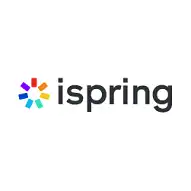 How to Create an Interactive Online Course
How to Create an Interactive Online Course
Master every stage of course development, from identifying learning objectives and creating a storyboard to perfecting the graphics and publishing your project online.
Cost
The Standard plan costs $270 and doesn’t include practical tasks. With the Pro plan, which costs $570, you’ll get hands-on assignments, expert reviews, a final project, and a three-month trial of iSpring Suite, a comprehensive authoring toolkit. You can also view demo lessons for free.
Duration
3 hours of video lessons plus practical tasks.
Pros
- All lessons are available immediately, and you can learn at your own pace.
- Practical assignments and knowledge checks after each lesson.
- A great deal of supplementary guides and articles are provided in addition to the main lessons.
- You can chat with your trainer for consultation, inspiration, and tips.
Cons
- The course concludes with a final project, but there is no final knowledge check.
- There is no opportunity to connect with other learners taking the course.
Overview
This course comprises 20 video lessons and covers everything you need to know to create effective and dynamic online courses. Anna Poli, a Senior Instructional Designer at iSpring, explains basic learning theories and methodologies, design principles, and how to use different content formats to make knowledge stick.
During the course, you’ll also learn how to:
- Set measurable learning objectives.
- Make a course script and a storyboard.
- Identify and quickly fix poorly designed slides.
- Create engaging training videos, role-plays, and assessments.
- Evaluate the effectiveness of your online course.
The course also introduces iSpring Suite, a powerful authoring toolkit. You’ll master its key features and be able to use the tool for your future projects.
By the end of the course, you’ll develop a final project — your own online course — receive expert feedback, and be ready to showcase it in your portfolio.
All the materials are available for 6 months after purchase.
Learner feedback:
I liked the way it was structured and how it provided all the essential ingredients to create an effective course. I also appreciated the free navigation because it allowed me to start with the lessons that interested me the most. Anna’s charisma and extensive knowledge made the learning experience even more enjoyable.
I would recommend this course to anyone seeking a clear understanding of what lies behind great e-learning.
Best for:
This course is designed for aspiring instructional designers, educators, business coaches, and anyone who develops training materials, at least occasionally. It’s also perfect for people with no previous ID experience or skills, as it starts with the basics and then moves on to more advanced aspects of eLearning content development.
3. Become an Instructional Designer (LinkedIn Learning)
 Become an Instructional Designer Learning Path
Become an Instructional Designer Learning Path
Master all the essentials of instructional design in this robust course put together by multiple industry experts from LinkedIn Learning.
Cost
1 month free trial, then LinkedIn Learning pricing goes to $39.99/month to access or $19.99/month if you pay for a year up front
Duration
11 courses, 14 hours of content total
Pros
- Comprehensive collection of instructional design lectures provides a well-rounded introduction to the field
- Learn from numerous professionals in the field
Cons
- Some of the classes are several years old
- No opportunity to network with instructors or peers
Overview
In this instructional design class online, you’ll learn instructional design basics from experts in the industry, helping prepare you for a career in the fast-growing eLearning field.
Each topic is broken down into short chunks in this foundational course, making it easy to fit learning into your schedule.
Earn a badge of completion for your LinkedIn profile when you finish all the courses. This ID certificate is focused on corporate business settings and practical techniques.
You will learn the following in this introductory course:
- What is instructional design?
- Neuroscience of learning and adult learners
- Current instructional design theories
- Instructional design models
- Needs analysis and storyboarding
- Writing learning objectives and desired learning outcomes
- Creating video training
- Working with SMEs
- Measuring learning effectiveness
Learner feedback:
I just finished my first course and felt like I was finally getting somewhere. I started and finished the course on Models of ID. It was a great course and just gave me a brief overview of some of the popular models that many IDs use.
Best for: People who have a LinkedIn Learning subscription and are active on LinkedIn, designers who want to learn from industry experts, corporate instructional designers. Try LinkedIn Learning free for one month.
4. e-Learning Ecologies (Coursera)
 e-Learning Ecologies: Innovative Approaches to Teaching and Learning for the Digital Age
e-Learning Ecologies: Innovative Approaches to Teaching and Learning for the Digital Age
Learn about the benefits of eLearning technology and how to utilize it effectively to better educate your students in this excellent online course.
Cost
Included with 7,000+ other courses with Coursera Plus subscription ($59/mo). Try Coursera Plus free for 7 days.
Duration
3 weeks to complete
Pros
- Offers university-level instruction
- Flexible schedule lets you learn at your own pace
Cons
- Some lectures can be a bit dry and lack engagement
- Not much of a community aspect
Overview
This course explores seven affordances of e-learning ecologies. These affordances, if recognized and harnessed, will prepare learners for success in a world that is increasingly dominated by digital information flows and tools for communication in the workplace, public spaces, and personal life.
This course offers a wide variety of examples of learning technologies and technology implementations that, to varying degrees, demonstrate these affordances in action.
It’s taught by multiple professors from the University of Illinois and is part of a certificate program for those who pay for the full course experience.
You will learn seven affordances of e-learning ecologies:
- Ubiquitous Learning
- Active Knowledge Making
- Multimodal Meaning
- Recursive Feedback
- Collaborative Intelligence
- Metacognition
- Differentiated Learning
Learner feedback:
A logically arranged course offering a cogent, insightful creative vision of learning in a time of emerging digital affordances. The course is interesting and worthwhile to take, beyond any shadow of a doubt. Highly recommended for anyone interested in teaching and learning in the 21st century, particularly e-learning, which increasingly intrudes on and mixes with “face to face” teaching and learning, as we harness the tools and media now available relatively easily, cheaply and ubiquitously.
Best for: People interested in the future of education and the “learning society,” including people who may wish to join education as a profession, practicing teachers interested in exploring future directions for a vocation, and community and workplace leaders who regard their mission to be in part “educative.” Try Coursera Plus free for 7 days.
5. Instructional Design Foundations (Coursera)
 Coursera - Instructional Design Foundations and Applications
Coursera - Instructional Design Foundations and Applications
This online instructional design course from the University of Illinois comprehensively covers the foundations of instructional design over a 4-week period. Included with a Coursera+ subscription
Cost
Included with 7,000+ other courses with Coursera Plus subscription ($59/mo). Try Coursera Plus free for 7 days. See our Coursera pricing guide for more info.
Duration
3 weeks
Pros
- Offers university-level instruction
- Flexible schedule lets you learn at your own pace
- Course is well organized
Cons
- Not much on the community/networking side of things
- Some lessons feel too long to keep the student’s attention
Overview
Learn the conceptual and theoretical foundations of instructional design in this excellent online course.
By understanding the concepts taught in this instructional design course, you’ll be better prepared to succeed in an eLearning environment.
Some of the things you’ll learn in this instructional design class include:
- Key concepts of instructional systems design
- Learning and instructional theories
- How to develop online learning objectives
- The process of instructional design
- Instructional design models
- Instructional solutions to performance problems in organizations
Learner feedback:
Very clear course, provides definitions and/or discussion of terms that at are useful for a clearer understanding of the ID process. Good continuity between topics and good use of diagrams.
I thoroughly enjoyed this course. It is well taught and well organised. The material provided a thorough overview of the field, and the readings were particularly fascinating and helpful.
Best for: Those new to the industry who need to get a grasp on instructional design theory and concepts. Try Coursera Plus free for 7 days.
6. Instructional Design Pro Part 1 (Udemy)
Cost
$79.99
Duration
28 lectures, 6.5 hours of video total
Pros
- Easy-to-follow instructions
- Pretty thorough
- Covers a lot of technical aspects overlooked by other courses
Cons
- The price for the course changes often, making it difficult to know if you’re getting the best deal
- The course focuses a bit more on the people in the room sometimes at the expense of the online viewer
- Some lessons drag a bit
Overview
This self-paced, on-demand instructional design class is the first in a three-part series.
It focuses on the initial steps in the instructional design process, including how to do a needs analysis and understand your audience.
It’s taught by Jason Teteak, the founder and CEO of Rule the Room Train the Trainer. Rather than spending a lot of time on theories and models, he focuses on transferring training skills via practical, simple, universal, and immediately actionable techniques.
When you’ve finished this ID course, check out Jason’s other two courses to learn about course design and curriculum production. Together, all of the courses act as a sort of instructional design mastery series.
You will learn:
- Identify with your audience and learn more about them
- Identify what they do and organize it in a way that makes sense
- Determine what to teach and how to organize it
- Determine the initial class structure
Learner feedback:
I thought the course was insightful and there was a lot of food for thought in terms of research, planning, designing and delivering a course. The layers of design structure felt a bit cumbersome but that may be because it is coming from a completely different frame of reference to my own. I liked the activities and the trainer’s engagement with the trainees. The resources available are really good. There was quite a lot of material to get through and sometimes it felt a little crammed. It was really positive having activities throughout and again having resources like the spreadsheet templates to facilitate that. Thank you!
Best for: Trainers who develop their own materials, people who want an introduction to needs analysis, designers who are looking for practical tips they can implement right away
7. Create Your First Course in Articulate Storyline 3 (Udemy)
Cost
$49.99 (see our Udemy pricing guide for more info)
Duration
28 lectures, 2.5 hours of video total
Pros
- Flexible, on-demand format
- Easy to follow the teacher’s instructions
- Well organized and very thorough
Cons
- Pacing is a little slow at times
- Audio quality could be better
Overview
This instructional design program covers the basics of getting started with Articulate Storyline 3.
Radu Velcea, a graphic design instructor for the past 7 years, walks you through the creation of a Storyline eLearning project. He shows you how to start a project from scratch and add interactive elements. He also covers how to assess a learner’s retention of the content by creating quizzes and a result page.
You’ll need Storyline 3 (full or trial version) to get the most out of this course.
You will learn:
- Setting up global preferences
- Starting a new project from scratch
- Adding animation, transitions, custom buttons, and images to a project
- Making sure your course meets accessibility requirements
- Creating a basic assessment
- Publishing your project
Learner feedback:
The course was very helpful and gave me a very descriptive and step by step guidance in creating a course with interactive elements, such as animations, buttons, hotspots, and audio narration, use of triggers to create animation paths and a lot more. Radu Velcea was very clear with a detailed and clear guidance of the use of the various tools required.
Best for: People who are new to Articulate Storyline 3, designers who want to make their eLearning courses more interactive and effective
8. Adobe Captivate Course Series (Udemy)
Cost
Individual course prices vary
Duration
About 2 hours per course
Pros
- Comprehensive instruction across the 3 courses
- Flexible, on-demand format
Cons
- No real community aspect for learners
- Some lessons have a dry presentation that doesn’t engage the student
Overview
Udemy offers a series of three Adobe Captivate courses that are perfect for aspiring instructional designers: Responsive Custom Quiz Questions, Focus on Simulations, and Focus on Demonstrations.
These online instructional design courses teach you how to use the more advanced features of Adobe Captivate eLearning software. If you’ve been wondering how to use variables, advanced actions, and multi-state objects, I recommend checking out all three.
Note that this series doesn’t provide an introduction to Captivate. Instead, it uses sample projects to show you how to use Captivate to go beyond the basics.
You’ll get lifetime access to these classes when you buy them, giving you the ability to go back to them as often as you need.
You will learn:
- Build your own advanced actions for multiple choice questions
- Create effective simulations and demonstrations using Adobe Captivate 8
- Understand the Adobe Captivate screen recording process
- Understand and configure the Mouse, Highlight Box and Text Caption objects
- Choose the correct output type based on your audience
Learner feedback:
Excellent Course. Clearly explained the topic and the steps. Provided great resource files. Examples allowed us to see certain steps repeated to more clearly follow the instructions.
Also really appreciated the “best practices” segment in the middle. Saves a lot of frustration later and having to learn things the hard way when applying the lesson to real world work.
When the instructor explains the why behind the steps, it helps us to better understand the software and helps us to be able to think through and solve other challenges.
Best for: Designers with some experience using Captivate who want to learn more about the advanced features
9. Instructional Design and Technology MicroMasters (edX)
Cost
$1,076.40 (edX pricing varies by course)
Duration
32 weeks
Pros
- Graduate-level instruction
- Very comprehensive
Cons
- Courses are on an instructor-paced schedule which lacks flexibility
Overview
This program consists of four courses:
- Learning Theory
- Instructional Design Models
- Digital Media, New Tools, and Technology
- Course Evaluation and Capstone Project
Each course is instructor-led with a set start and stop date and lasts for 8 weeks.
These instructional design classes are offered by the University of Maryland University College (UMUC) and taught by UMUC professors.
Overall, the program focuses on understanding learning theory and shows you how to blend traditional instructional design models with rapid prototyping and data analytics to create online courses. You will gain hands-on experience developing and publishing online courses using the edX platform.
You will learn:
- Understand contemporary learning theories to develop online learning experiences
- Apply instructional design models to the development of online learning experiences
- Select, evaluate or design digital media to support learning
- Identify, evaluate, and integrate emerging technologies to support online learning
- Design an implementation process for online learning experiences
- Apply data mining techniques to the design and evaluation of learning experiences
Learner feedback:
I found the contents of this course very interesting. Being a research scholar in educational technology, I found this course very useful. Designing the course contents for a different combination of technology and pedagogy is what I am looking forward to.
Best for: People who want a more structured, instructor-driven program, designers who are thinking about a Master’s degree but aren’t sure it’s for them and want to try it out first, people interested in learning theories
10. Introduction to Instructional Design (Harvard)
Cost
$3,220
Duration
15 weeks
Pros
- University-quality education
- Curriculum is up to date
Cons
- Course is only available at certain times of year
- Very limited number of seats available
Overview
This is a college-level, instructor-led course with academic readings, group discussions, and six projects.
You’ll study learning theories and frameworks, project planning, content expertise, communication, writing, and technology, and apply these theories to instructional design projects.
Throughout the course, students work together to produce learning experiences using today’s media and technologies. Students submit a project every two weeks.
You’ll want to plan ahead for this instructional design course; it is only offered for certain semesters, and it’s not available on demand.
You will learn:
- Good instructional design makes for better learning.
- Everyone needs to be a lifelong learner in the 21st century.
- Empathy is at the heart of instructional design.
- Metacognition is an ongoing practice that makes you a better learner and instructional designer.
Best for: People looking for an academic experience, professionals who want to build their portfolio, designers who want to work with others on academic projects
What to Look for When Choosing an Instructional Design Course
Over the several years I’ve spent in the eLearning industry, I’ve helped countless aspiring instructional designers get the training they need to launch successful, thriving careers in the field, so I know what to look for in an instructional design program.
Here are some of the things I looked at when rating instructional design courses, and I also highly recommend considering these factors yourself when choosing a training program:
- The quality of the course content. Make sure that the course covers all the essential topics in instructional design. That means things like ADDIE model application, creating learner personas, developing accessible eLearning content, utilizing Learning Management Systems (LMS), implementing multimedia learning principles, and applying formative and summative assessment strategies in a virtual environment.
- The length of the course. Some courses are very comprehensive and can take months to complete. Others are shorter and can be completed in a matter of weeks.
- The price of the course. Some instructional design courses can be quite expensive. Others are very affordable. Make sure to compare prices before enrolling in a course.
- The format of the course. Some instructional design courses are self-paced and allow you to learn at your own pace, while others are instructor-led and require you to attend live sessions.
- The credentials of the course provider. It is important to make sure that the course is provided by a reputable institution or organization with a strong reputation in instructional design.
- What students are saying. Finally, read reviews from previous students before enrolling in an online instructional design course. Reviews can provide valuable insight into the quality of the course, the instructor, and the learning materials.
A Final Word on the Best Instructional Design Courses
If you want to learn about eLearning and online education, you have more options than ever before thanks to these great instructional design classes online.
Your learning style, your goals, and your budget should all be part of your decision-making process. Think about how much time you have to devote to your learning and building your ID skills.
Passing these online instructional design courses can help you to improve your ID portfolio and can help advance your career.
I also recommend previewing these instructional design classes (remember many of them offer free trials as linked above!) if you can. This will go a long way toward showing you whether the course is worth the investment.
Never stop learning, and enjoy the journey to becoming an instructional designer!

